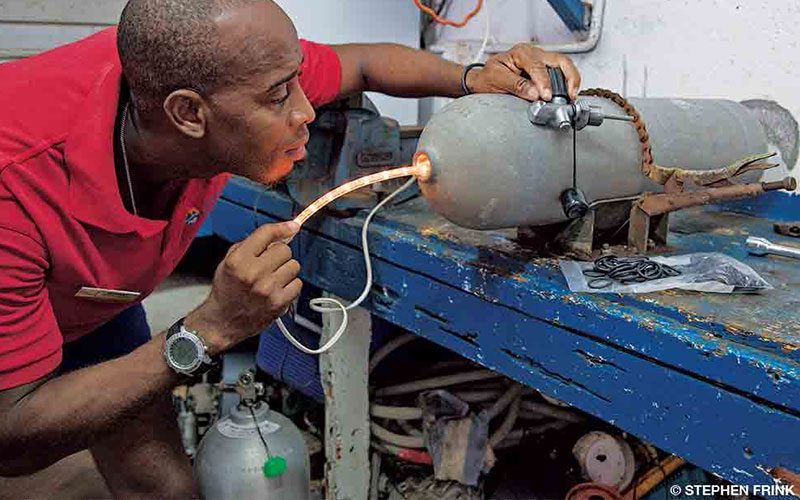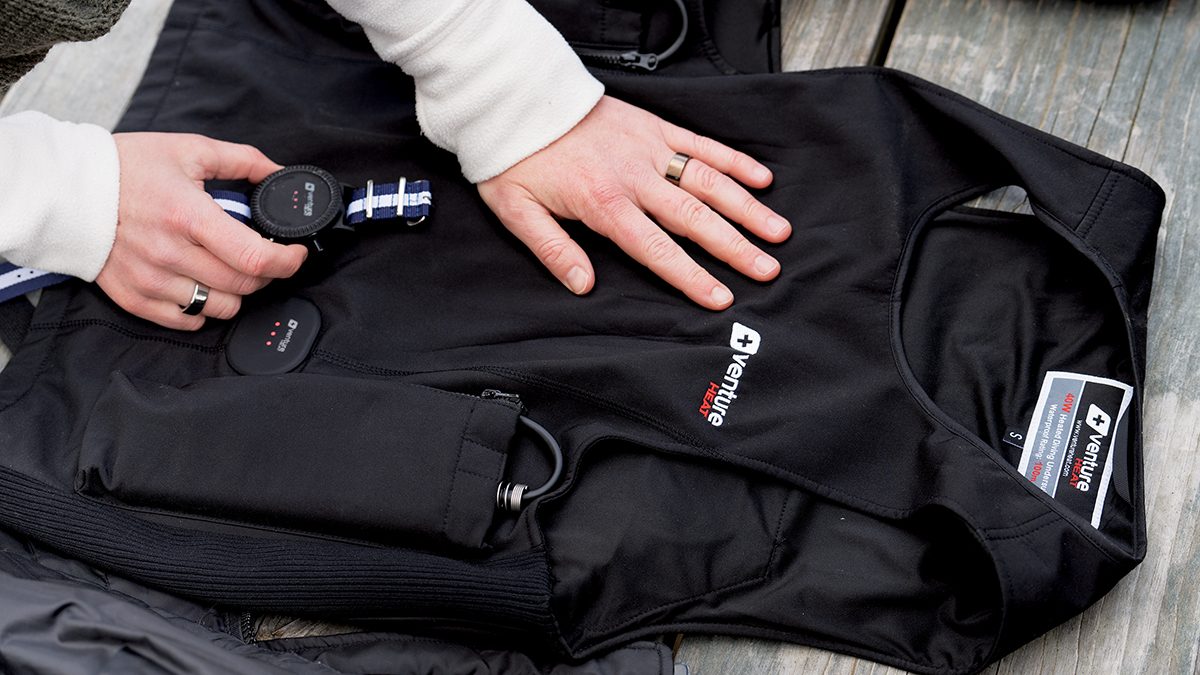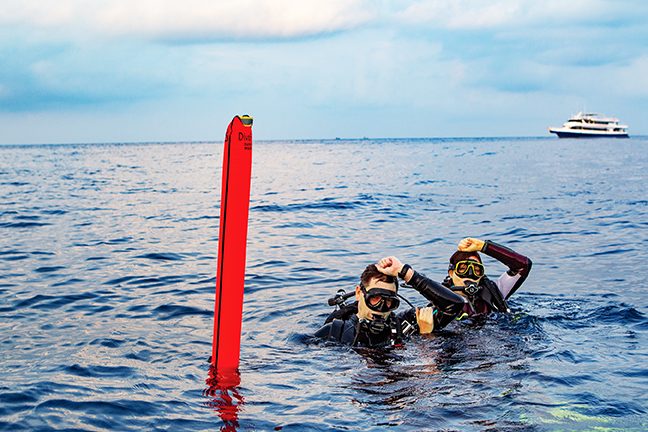After the rupturing of two alloy scuba cylinders, many wonder if they are safe to use? While cracking was documented in these cylinders, a major issue with their use is lack of consistent training and regulation in the testers, inspectors and fill-station operators.
GETTING COLD ON A DIVE IS UNPLEASANT, but if it progresses to hypothermia, it becomes potentially fatal. Even more than discomfort, considering the physiological and psychological stress it can cause, being cold is potentially risky.
SURFACE MARKER BUOYS (SMBS) AND DELAYED SURFACE MARKER BUOYS (DSMBS) are common and essential safety devices. These brightly colored, inflatable tubes, sometimes called safety sausages, are critical pieces of equipment […]
The dive light is essential equipment that can benefit all divers on most dives. There are several types of lights with various uses and a few key considerations you should make before purchasing. There is no one-size-fits-all approach to dive lights, so each diver must carefully consider their own goals and needs before deciding which model is most useful.
NEW AND IMPROVED TECHNOLOGY enters the dive industry every year. Divers of all experience levels can now utilize smaller, lighter, faster, quieter, and more reliable DPVs to make their diving safer and more enjoyable.
THE DIVE KNIFE IS AN ICONIC PART OF A SCUBA DIVER’S GEAR. Since the inception of diving as a recreational activity, the dive knife’s presence in a diver’s equipment has […]
IN THE 1900s UMBERTO PELIZZARI was a young diver from Busto Arsizio, Italy, who was making headlines by breaking world records in constant weight and variable weight freediving. Needing an […]
Technological advances have greatly changed and improved the dive experience. Learn more about these advances.
To pee or not to pee? That is not the question for technical divers, instructors, or others who spend long hours in the water. Proper hydration and comfort ensure that urine will flow. The question is, What’s the best way to handle it?
The decision to sustainably harvest marine life can spark vigorous discussions among divers. Regardless of your views, there are benefits to understanding the equipment, procedures, and dangers associated with spearfishing.



